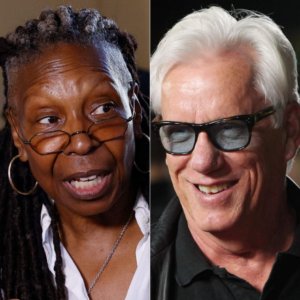
Coach Tomlin Takes Action, Benches Two Steelers Players for Anthem Kneeling
Pittsburgh Steelers’ Head Coach Mike Tomlin made headlines recently by benching two players who kneeled during the national anthem, underscoring the ongoing debate around protest in professional sports. The decision, which took place on the spot, reflects the complexities coaches face when players use high-profile moments to make personal and political statements, especially during events that hold symbolic national importance like the anthem.
The Steelers are no strangers to the public eye when it comes to matters of protest and patriotism. In 2017, the team was at the center of national attention when they remained in the locker room during the national anthem, allowing players to avoid individual stances that could divide the team. Tomlin’s handling of the incident then was widely praised for prioritizing team unity, but the benching of players who chose to kneel suggests a potential shift in his approach to balancing personal expression with team policy.
Kneeling during the national anthem has been a powerful gesture in sports since 2016, when former NFL quarterback Colin Kaepernick first did so as a protest against racial injustice and police brutality. Since then, many athletes across leagues and sports have adopted the act as a way to bring attention to social justice issues. Supporters of anthem kneeling see it as a peaceful and respectful form of protest, while critics argue it disrespects the flag and those who have served in the military. This divide has placed coaches like Tomlin in difficult positions, needing to manage both public expectations and the beliefs of their players.
Tomlin’s immediate response to bench the players indicates a potential shift toward enforcing a more traditional stance regarding the anthem. While the NFL itself does not have a mandatory rule requiring players to stand, teams are generally free to establish their own guidelines. Tomlin’s choice to act in real time is notable and suggests he is keen on establishing a clear message: while he respects his players’ views, team conduct during the anthem is not negotiable. This stance could serve as a precedent, possibly signaling to other teams that individual actions during the anthem may be subject to disciplinary measures, particularly if they go against team policies.
The public reaction to Tomlin’s decision has been mixed. Some fans applauded the move, praising it as a strong stance for unity and respect for tradition. Others criticized it, viewing the decision as a restriction on players’ right to free expression, especially given that the NFL has increasingly positioned itself as a platform that encourages players to use their voices for change. The league’s support for social justice campaigns, player-led initiatives, and public stances against racial discrimination have led some to see Tomlin’s decision as contradictory to the NFL’s broader mission.
Within the Steelers organization, Tomlin’s choice may be aimed at fostering a specific team culture that emphasizes shared identity and unity over individual demonstrations. He has consistently been a coach who values discipline, focus, and team cohesion, and it’s possible this decision was as much about maintaining those principles as it was about the anthem itself. By benching the two players, Tomlin could be reinforcing his expectations for game conduct, setting a clear boundary around when and where personal statements can be made.
Moving forward, Tomlin’s decision to bench players for anthem kneeling could have ripple effects across the NFL. Teams may feel encouraged to adopt similar approaches, while players who wish to protest may find themselves facing restrictions. For the league as a whole, the situation reveals an ongoing challenge: how to support players’ rights to self-expression and activism while managing the preferences of fans, sponsors, and team policies. Tomlin’s choice shows that these issues are far from resolved and may remain contentious as social and political issues continue to intersect with the world of professional sports.
As of now, it remains to be seen if the benched players will face additional disciplinary actions or if the decision was an isolated response to that particular game. However, Tomlin’s swift action has made it clear that, under his leadership, players are expected to adhere to team guidelines—at least when it comes to visible, in-game expressions.





